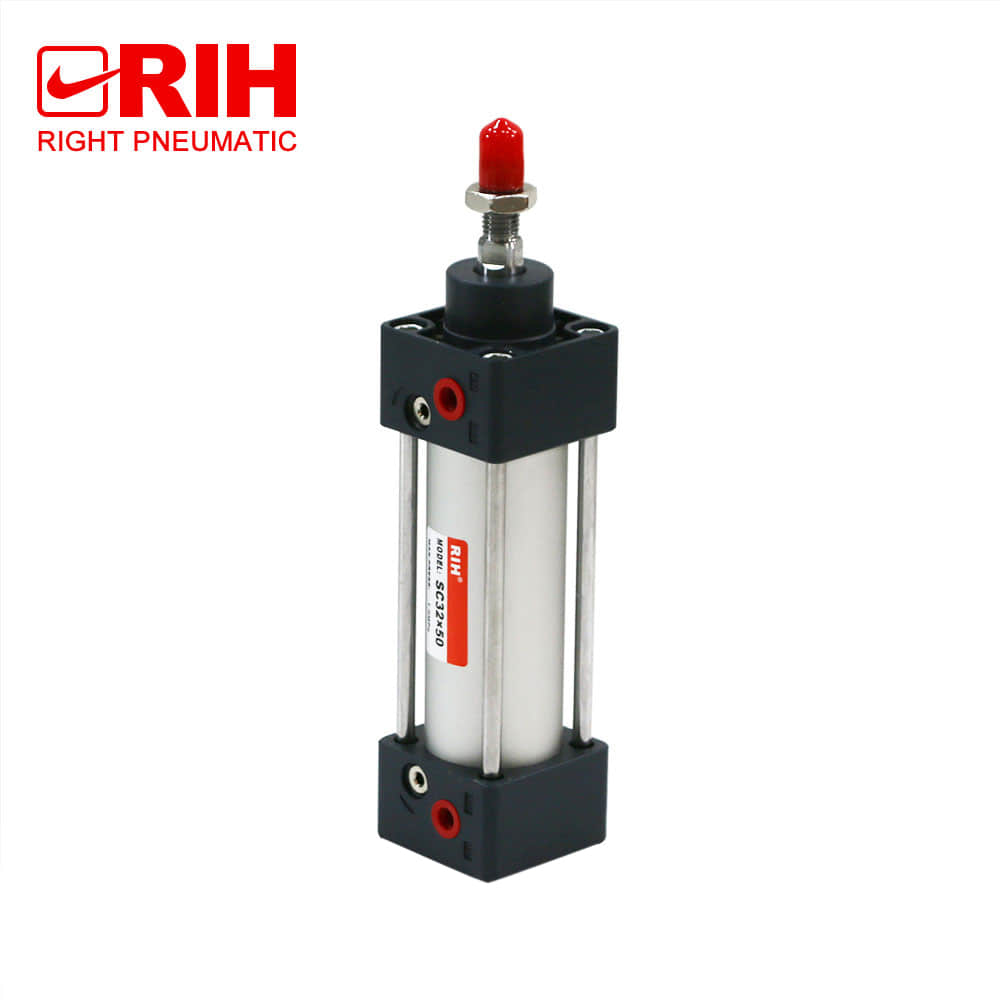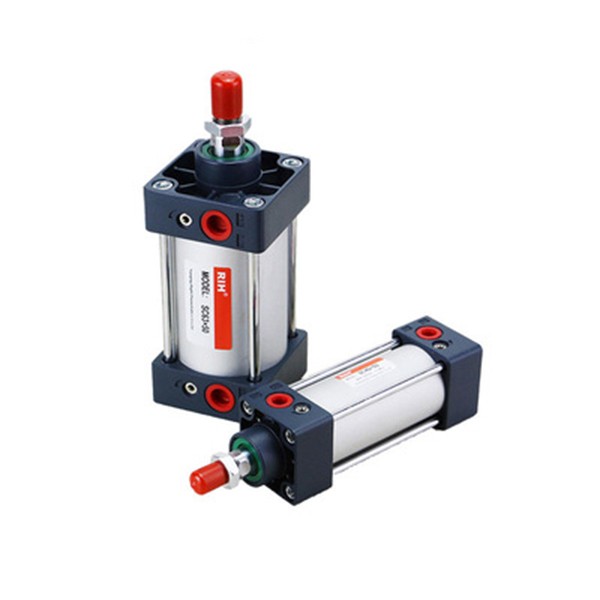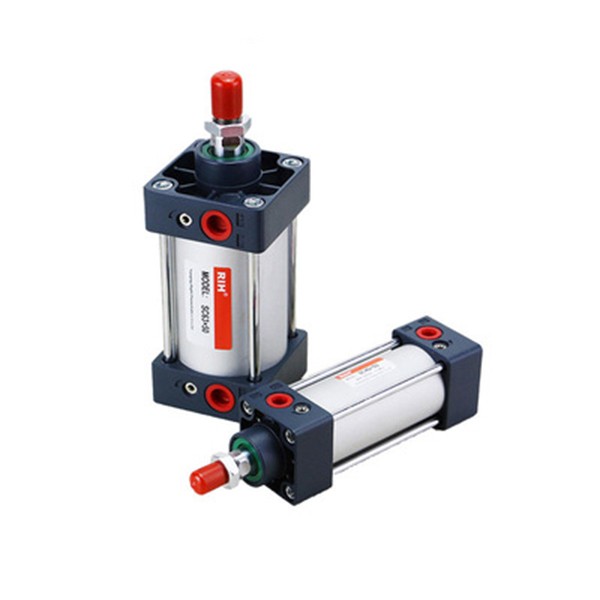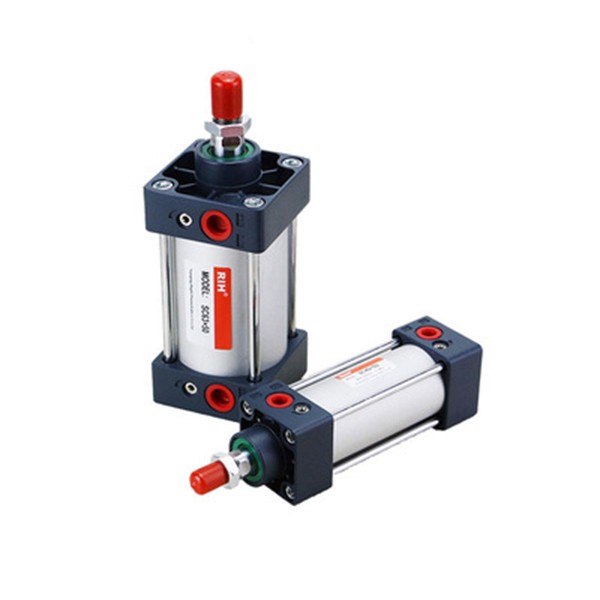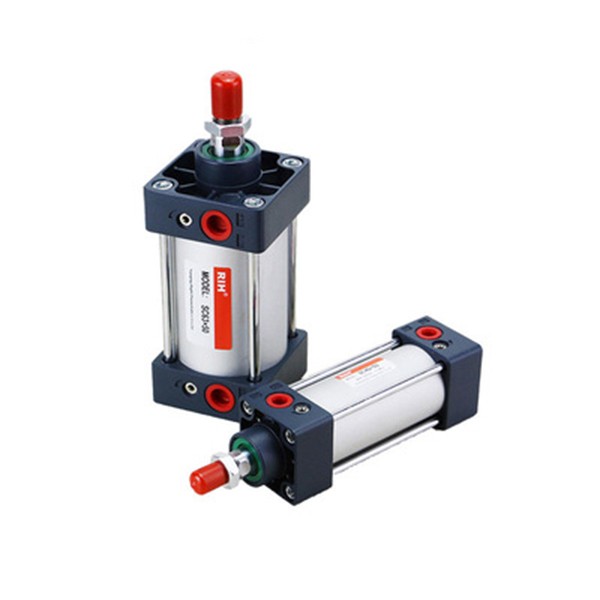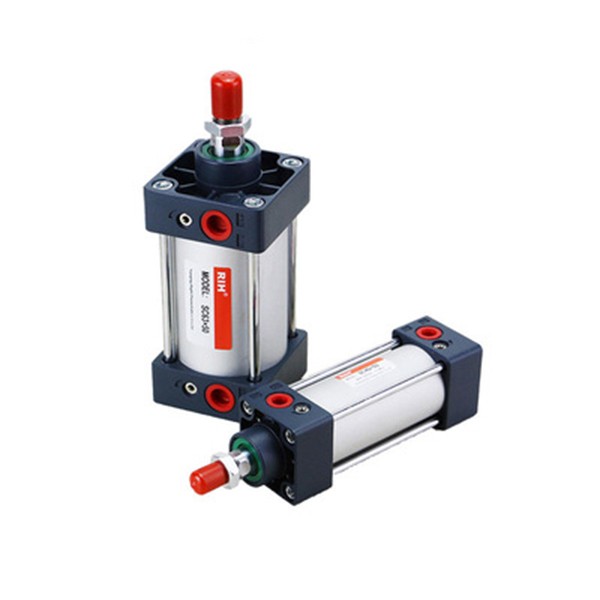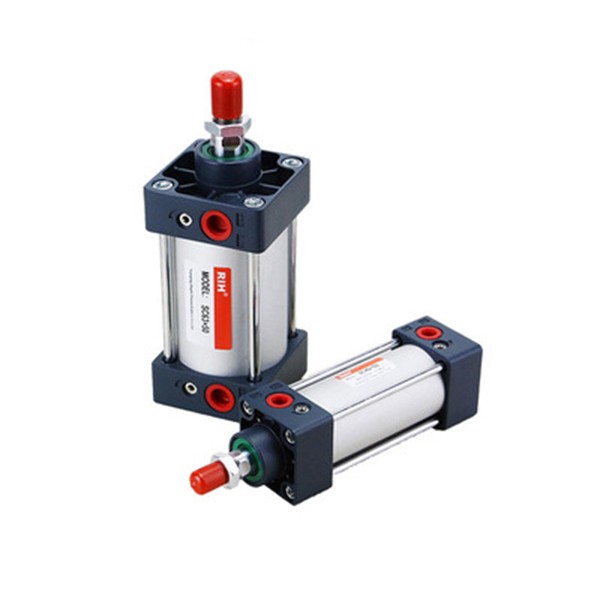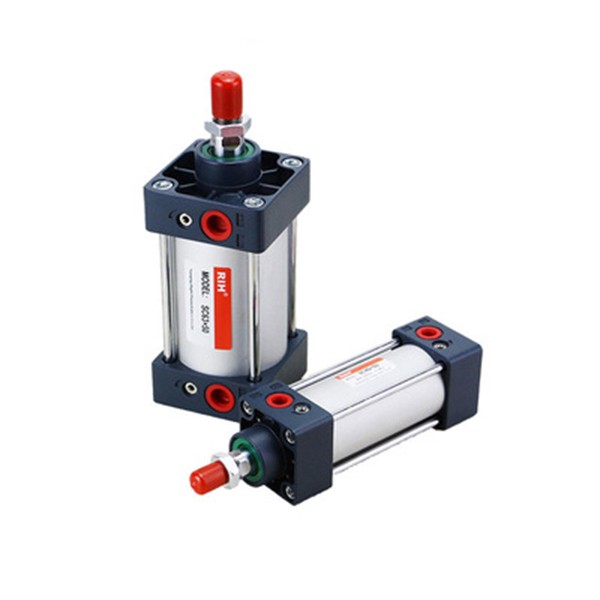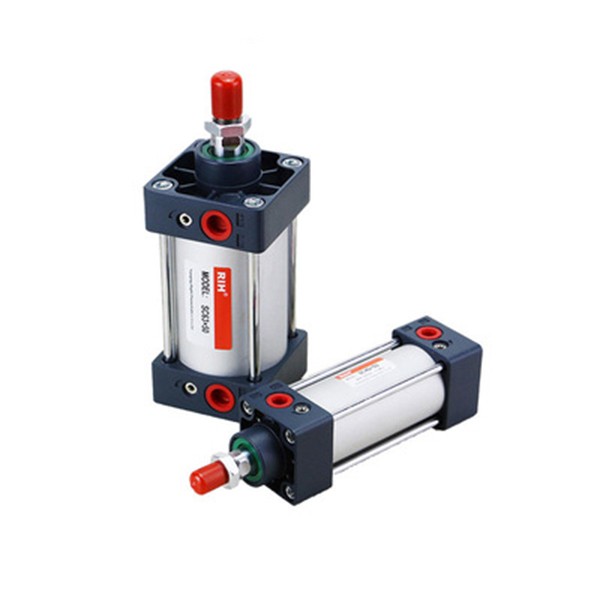Standard Cylinder
What is standard cylinder?
A Standard Cylinder, in the realm of pneumatics, is a mechanical device that harnesses the power of compressed air to produce a force in a reciprocating linear motion. Think of it as the muscle of many automation systems – it pushes, pulls, lifts, and lowers, all with impeccable precision.
Standard Gas Cylinder
A Standard Gas Cylinder is a pressure vessel designed to store gases at above atmospheric pressure. They're like the unsung backbone of myriad industries, holding within their confines the very essence that powers many processes.
- Body/Shell: The main structure, where the gas is stored.
- Valve: To control the release or retention of the gas.
- Safety Mechanisms: Such as pressure relief valves, ensuring safe operations even under unforeseen conditions.
Uses & Applications of Standard Gas Cylinder
- Industrial Processes: Such as in the chemical, mineral, and electric power industries.
- Medical Applications: Oxygen for patients, nitrous oxide for anesthesia, etc.
- Food & Beverage: Carbonation of soft drinks, preservation, and packaging.
- Research & Laboratories: Various gases used for experiments and processes.
Hydraulic Cylinders
A Hydraulic Cylinder is a mechanical actuator that provides unidirectional force through a unidirectional stroke. In simpler terms, it's the muscle behind many heavy-duty applications, converting hydraulic energy (fluid power) into mechanical energy.
While variations abound, the basic architecture remains similar:
- Cylinder Barrel: The chamber where the pressure is exerted.
- Piston: Moves back and forth inside the barrel under hydraulic pressure.
- Piston Rod: Extends from the piston and transmits the force externally.
- End Caps: Seal both ends of the barrel.
- Seals: Ensure no fluid leakage and maintain pressure integrity.
The reach of Hydraulic Cylinders is vast:
- Construction Equipment: Think excavators, bulldozers, and cranes.
- Manufacturing Machinery: Presses, molds, and assembly line equipment.
- Aerospace: Aircraft controls and landing gear.
- Agriculture: Tractors, harvesters, and loaders.
Low Pressure Hydraulic NFPA Mounts
Low Pressure Hydraulic NFPA Mounts are standardized mounts specifically designed for hydraulic cylinders operating under low-pressure conditions. They are crafted according to the guidelines set by the NFPA, ensuring consistency, safety, and compatibility across various applications.
The NFPA's standards act as a seal of quality and assurance. Adhering to these:
- Ensures compatibility across diverse equipment.
- Promotes safety in design and operations.
- Offers ease of replacement and upgrades due to standardized measurements and specifications.
Types of NFPA Mounts
Based on the needs of applications, several mounts have been standardized by the NFPA:
- Flange Mounts: Ideal for enduring both tension and compression loads.
- Side and Lug Mounts: Best suited for applications that handle shear forces.
- Pivot Mounts: Perfect for oscillating movements.
- Foot Mounts: Designed for supporting the weight of the entire assembly.
Advantages of Low Pressure Hydraulic NFPA Mounts
- Uniformity & Consistency: Standardization ensures ease of interchangeability.
- Enhanced Safety: Adhering to NFPA standards ensures reduced risks of operational mishaps.
- Versatility: Catering to a wide range of industrial applications.
- Longevity: Constructed to withstand low-pressure operations without wear and tear.
Common Applications
From the textile industry to advanced robotics, these mounts find applications in:
- Automation processes where precision is paramount.
- Machine tool operations.
- Material handling systems.
- Robotics and assembly lines.
Heavy Duty - High Speed Hydraulic Cylinders
Heavy Duty - High Speed Hydraulic Cylinders are designed to operate under strenuous conditions, delivering significant force at remarkable speeds. Imagine combining the power of a bulldozer with the swiftness of a sports car—that's the magic we're talking about.
- Operational Efficiency: Accelerated cycle times enhance productivity.
- Durability: Built to withstand demanding conditions, reducing downtimes.
- Precision & Control: Even at high speeds, there's no compromise on accuracy.
- Versatility: Adaptable across industries, showcasing their diverse prowess.
Standard Cylinder Components and Structure
While the design can vary based on specific applications and manufacturer preferences (wink wink, think RIH's top-tier designs), a standard pneumatic cylinder typically comprises:
- Cylinder Barrel: The main body where the compressed air is stored and where the magic happens.
- End Caps: Sealed ends of the barrel – they play house to other integral components.
- Piston: A disc or rod-like component that moves within the barrel when air pressure is applied.
- Piston Rod: Attached to the piston, it moves in and out of the cylinder, doing the heavy lifting (sometimes quite literally).
What are the 4 types of gas cylinders?
Gas cylinders are ubiquitously used across numerous industries, storing gases under high pressures. While the specifics can vary based on region, application, and industry, gas cylinders are commonly categorized into four primary types:
1. High-Pressure Cylinders
These are the most commonly recognized form of gas cylinder.
- Design: Typically long and slender, made from robust metals like steel or aluminum.
- Uses: Store gases at very high pressures, often up to 3000 psi or more.
- Applications: Used for breathable oxygen, welding gases, and many industrial processes.
2. Liquid Cylinders
Designed to hold gases that are in a cryogenic liquid state.
- Design: Feature a double-walled construction with an insulating vacuum in between. The interior is made of stainless steel with multiple sections like a liquid section and a gas section.
- Uses: Store gases in a cooled, liquid state at lower pressures than high-pressure cylinders.
- Applications: Frequently used for gases like nitrogen, oxygen, or carbon dioxide which can be refrigerated or cooled into a liquid form.
3. Acetylene Cylinders
Specially designed for storing acetylene due to its unique properties.
- Design: Unlike other gas cylinders, the interior of acetylene cylinders is filled with a porous material that's saturated with acetone. This ensures acetylene is safely contained.
- Uses: Exclusively used for acetylene.
- Applications: Acetylene is commonly used in welding and metal cutting.
4. Composite Cylinders
A modern variant that combines material technologies to create lightweight, high-strength cylinders.
- Design: Typically consists of a metal liner (usually aluminum) with a composite wrap around it made of materials like carbon fiber or fiberglass.
- Uses: Store various gases, often used when weight is a concern.
- Applications: Firefighters' breathing apparatus, aerospace applications, and other scenarios requiring mobility and weight efficiency.
What is the most common type of cylinder?
In the diverse world of gas storage and transportation, the High-Pressure Cylinder stands out as the most common and widely recognized type.
Characteristics of High-Pressure Cylinders
-
Material: Typically constructed from durable metals, primarily steel or aluminum. The choice of material offers the cylinder its requisite strength to safely contain gases under high pressures.
-
Shape & Size: These cylinders are often long and slender, with a cylindrical shape capped with a rounded or flat top, depending on the design. They come in various sizes, from smaller portable ones to larger industrial sizes.
-
Pressure Rating: High-Pressure Cylinders are designed to store gases at very high pressures, often ranging from 2,000 psi to 3,000 psi, and in some cases, even higher.
-
Valves & Regulators: They are equipped with valves for controlling the release of the gas. Additionally, they often have a pressure regulator attached when in use to control and reduce the gas pressure during release.
Applications and Uses
-
Medical: Used for storing breathable oxygen for patients in hospitals and for portable oxygen delivery.
-
Industrial: Widely utilized in various industries for processes that require gases like argon, nitrogen, oxygen, and more.
-
Welding: Store gases like argon, oxygen, acetylene, and carbon dioxide, essential for different welding processes.
-
Scuba Diving: Hold compressed breathable air for divers.
-
Fire Departments: Store breathable air for firefighters in potentially hazardous environments.
-
Research & Laboratories: Contain gases used for various experimental processes.
What are the standard sizes of gas cylinders?
Gas cylinders come in various sizes, depending on their intended use, the gas they contain, and regional standards. Here's an overview of some standard sizes, typically categorized by volume and dimension:
- A or Picnic Size: Approximately 1 kg capacity
- B or BBQ Size: Approximately 2-3 kg capacity
- D Size: Approximately 2 kg capacity
- E Size: Approximately 4.5 kg capacity
- G Size: Approximately 8-10 kg capacity
- J Size: Approximately 9.4 kg capacity
- L Size: Approximately 45 kg capacity
- T Size: Approximately 50 kg capacity


